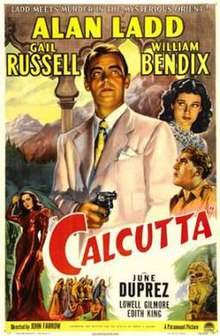
The Blue Dahlia is a 1946 American crime film and film noir with an original screenplay by Raymond Chandler directed by George Marshall and starring Alan Ladd, Veronica Lake and William Bendix. It was Chandler's first original screenplay.
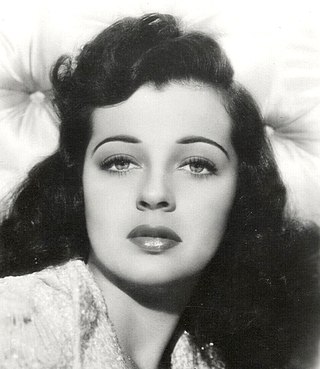
Gail Russell was an American film and television actress.
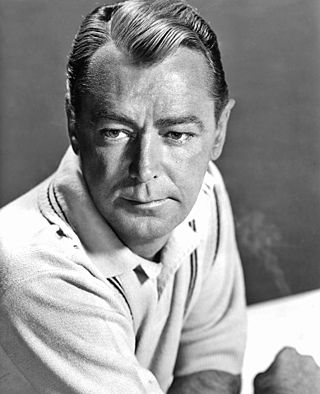
Alan Walbridge Ladd was an American actor and film producer. Ladd found success in film in the 1940s and early 1950s, particularly in films noir and Westerns. He was often paired with Veronica Lake in films noir, such as This Gun for Hire (1942), The Glass Key (1942), and The Blue Dahlia (1946). Whispering Smith (1948) was his first Western and color film, and Shane (1953) was noted for its contributions to the genre. Ladd also appeared in ten films with William Bendix.

June Ada Rose Duprez was an English film actress.

This Gun for Hire is a 1942 American film noir crime film directed by Frank Tuttle and starring Veronica Lake, Robert Preston, Laird Cregar, and Alan Ladd. It is based on the 1936 novel A Gun for Sale by Graham Greene.

John Villiers Farrow, KGCHS was an Australian film director, producer, and screenwriter. Spending a considerable amount of his career in the United States, in 1942 he was nominated for the Academy Award for Best Director for Wake Island, and in 1957 he won the Academy Award for Best Adapted Screenplay for Around the World in Eighty Days. He had seven children by his wife, actress Maureen O'Sullivan, including actress Mia Farrow.

Patric Knowles was an English film actor. Born in Horsforth, West Riding of Yorkshire, he later changed his name to reflect his Irish heritage. He made his film debut in 1932, and played either first or second film leads throughout his career. He appeared in films from the 1930s to the 1970s.

Variety Girl is a 1947 American musical comedy film directed by George Marshall and starring Mary Hatcher, Olga San Juan, DeForest Kelley, Frank Ferguson, Glenn Tryon, Nella Walker, Torben Meyer, Jack Norton, and William Demarest. It was produced by Paramount Pictures. Numerous Paramount contract players and directors make cameos or perform songs, with particularly large amounts of screen time featuring Bing Crosby and Bob Hope. Among many others, the studio contract players include Gary Cooper, Alan Ladd, Paulette Goddard, Ray Milland, William Holden, Burt Lancaster, Robert Preston, Veronica Lake, William Bendix, Barbara Stanwyck and Paula Raymond.

The Great Gatsby is a 1949 American historical romance drama film directed by Elliott Nugent, and produced by Richard Maibaum, from a screenplay by Richard Maibaum and Cyril Hume. The film stars Alan Ladd, Betty Field, Macdonald Carey, Ruth Hussey, and Barry Sullivan, and features Shelley Winters and Howard Da Silva, the latter of whom later returned in the 1974 version. It is based on the 1925 novel The Great Gatsby by F. Scott Fitzgerald. Set during the raucous Jazz Age on Long Island near New York City, the plot follows the exploits of enigmatic millionaire and bootlegger Jay Gatsby who attempts to win back the affections of his former lover Daisy Buchanan with the aid of her second cousin Nick Carraway.

Two Years Before the Mast is a 1946 American historical adventure film directed by John Farrow and starring Alan Ladd, Brian Donlevy, William Bendix, and Barry Fitzgerald. It is based on Richard Henry Dana Jr.'s travel book of the same name and was produced and distributed by Paramount Pictures.

O.S.S. is a 1946 American war spy film directed by Irving Pichel and starring Alan Ladd, Geraldine Fitzgerald and Patric Knowles. Produced and distributed by Paramount Pictures, it portrays the activities of the Office of Strategic Services during World War II. The screenplay was written by Richard Maibaum, a World War II veteran who would later write twelve of the first fifteen James Bond films. Maibaum, a former Broadway actor, also narrates the film.

Whispering Smith is a 1948 American Western film directed by Leslie Fenton and starring Alan Ladd as a railroad detective assigned to stop a gang of train robbers. The supporting cast includes Robert Preston, Brenda Marshall and Donald Crisp.

The Glass Key is a 1942 American film noir based on the 1931 novel of the same name by Dashiell Hammett. The picture was directed by Stuart Heisler starring Brian Donlevy, Veronica Lake and Alan Ladd. A successful earlier film version starring George Raft in Ladd's role had been released in 1935. The 1942 version's supporting cast features William Bendix, Bonita Granville, Richard Denning and Joseph Calleia.
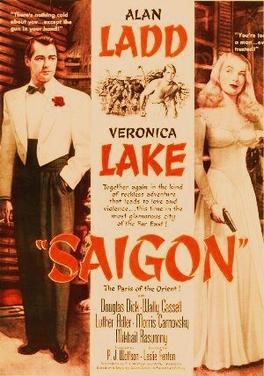
Saigon is a 1948 American crime film directed by Leslie Fenton starring Alan Ladd and Veronica Lake, in their fourth and final film together. It was distributed by Paramount Pictures and was one of the last films Veronica Lake made under her contract with the studio. Ladd and Lake made four films together; This Gun for Hire and The Glass Key, both in 1942, The Blue Dahlia in 1946 and Saigon. While the earlier films all proved to be big box office successes, Saigon did not do as well financially. Ladd continued to remain one of Paramount's top male stars, while Lake's career was in decline. By the end of 1948 her contract with Paramount had expired and the studio chose not to renew it.

Wild Harvest is a 1947 American drama film directed by Tay Garnett and starring Alan Ladd, Dorothy Lamour and Robert Preston. It was produced and distributed by Paramount Pictures.
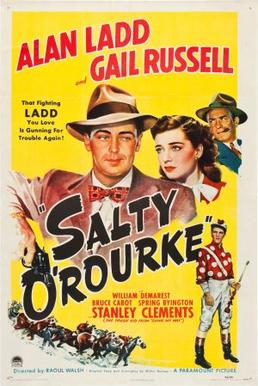
Salty O'Rourke is a 1945 American sports drama film directed by Raoul Walsh and starring Alan Ladd, Gail Russell and William Demarest. Produced and distributed by Paramount Pictures, it was nominated for an Academy Award in 1946.
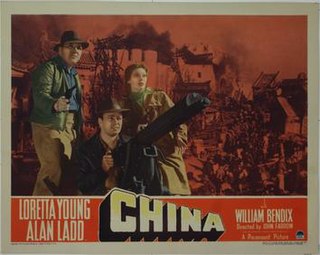
China is a 1943 film directed by John Farrow and starring Loretta Young, Alan Ladd and William Bendix. Ladd's character David Llewellyn Jones, wearing a fedora, a leather jacket, khakis and a beard stubble, was an inspiration for Indiana Jones. Aside from Tala Birell as one of Jones' paramours at the beginning of the film, the entire supporting cast is Asian, including Philip Ahn and Richard Loo.
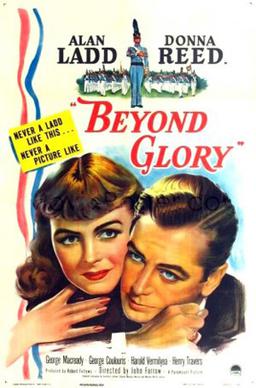
Beyond Glory is a 1948 American drama film directed by John Farrow and starring Alan Ladd and Donna Reed. Written by William Wister Haines, Jonathan Latimer, and Charles Marquis Warren, the film is about a former soldier who thinks he may have caused the death of his commanding officer in Tunisia. After visiting the officer's widow, they fall in love, and she encourages him to attend the United States Military Academy at West Point.

Lionel Lindon, ASC was an American film cameraman and cinematographer who spent much of his career working for Paramount.
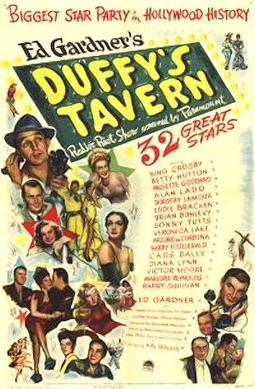
Duffy's Tavern is a 1945 American comedy film directed by Hal Walker and written by Melvin Frank and Norman Panama. The film stars Ed Gardner, Bing Crosby, Betty Hutton, Paulette Goddard, Alan Ladd, Dorothy Lamour, Eddie Bracken and Brian Donlevy. The film was released on September 28, 1945, by Paramount Pictures.
